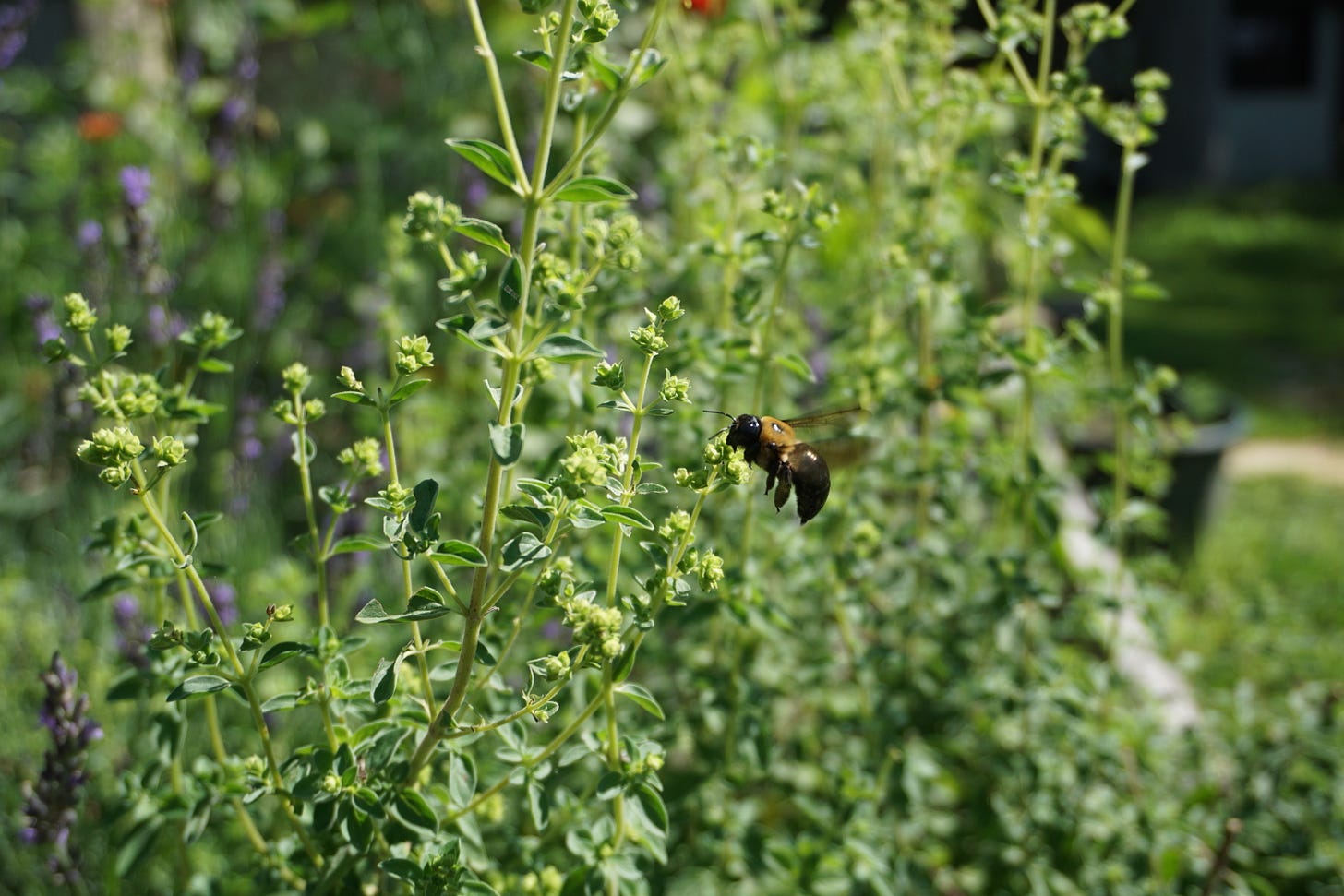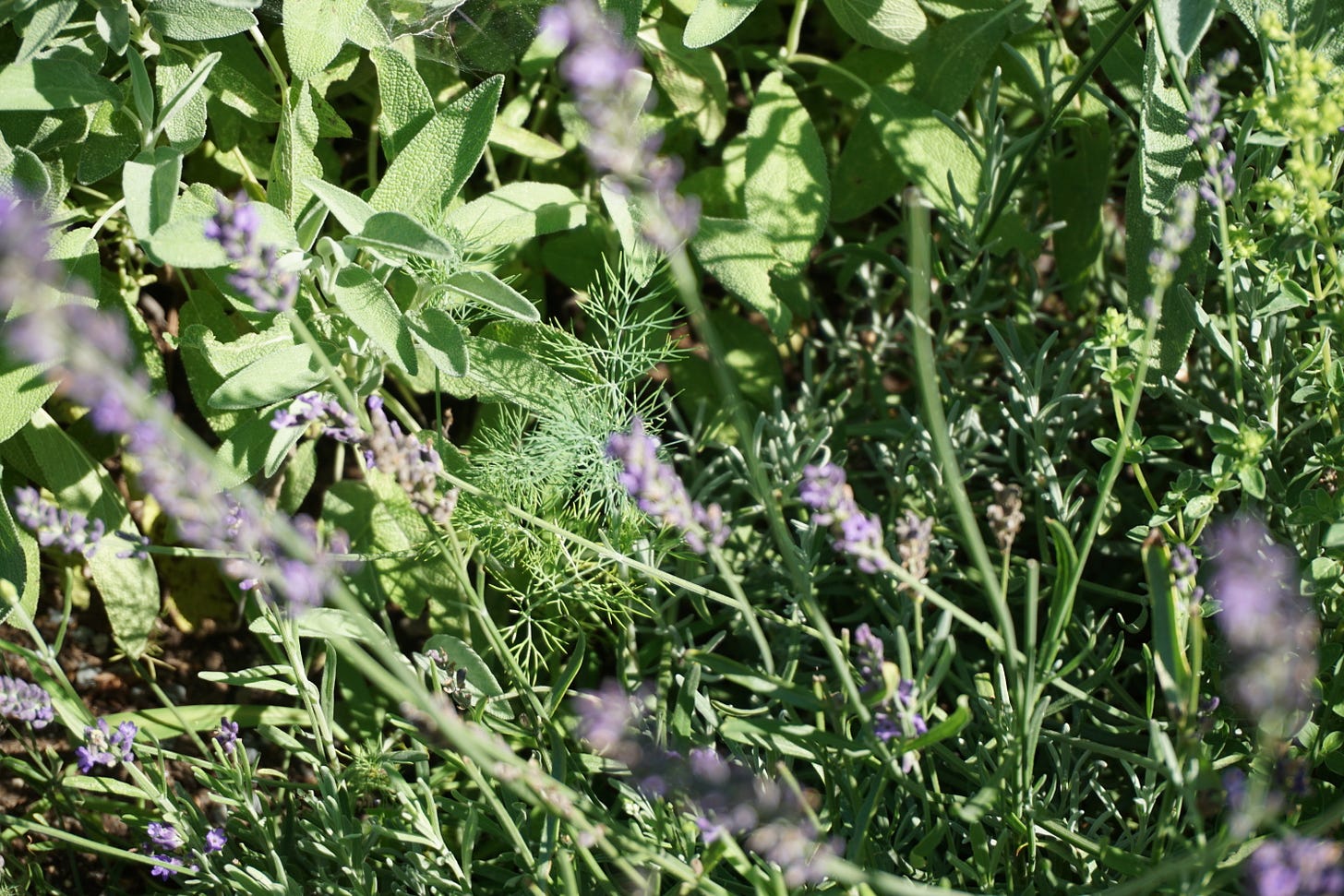The Bees Know Best: Lessons from My Flowering Herbs
Growing herbs for flavor, beauty and the pollinators
How lucky are we that we are surrounded by nature that is constantly growing and changing? A living reminder that we aren’t meant to stay the same. Each cycle of life begins with a seed, grows and blossoms into something miraculous, dies back, hibernates for a while and then comes back again stronger and full of life.
I always enjoyed growing herbs in the garden. I knew they would enhance my cooking. But my appreciation for these plants started and ended there. I was taught to pinch the flowers off before they bolted and to see herbs only as tender leaves meant for the kitchen.
That was a misunderstanding that a plant was only useful in its prime harvesting phase. Now as I work alongside nature, I know that plants have value at every stage: seed, seedling, leaf, flower and fruit. They are not only grown for my benefit but for the benefit of the plants around them and the wildlife that lives in my yard, including my Italian honeybees, who have been obsessed with my flowering herb garden.
Why I let My Herbs Flower and Go to Seed
I want to spend more time in a garden that is alive with color, movement and sound.
They attract beautiful butterflies, bumblebees and all kinds of pollinators. They give a fairy habitat feel to my backyard and in return pollination rates rise.
Companion planting herbs benefits the plants around them by attracting beneficial insects like hoverflies and ladybugs that naturally keep pests in check.
For my pickling spice I use the seeds harvested from the garden, dill and coriander. Many seeds can be used as both the birth of a plant and as a spice in cooking: dill, coriander, mustard, fennel, fennugreek, and cumin.
Saving seeds from your own herbs makes them more adapted to your microclimate.
An act of self-reliance and resiliency! By collecting your own seeds and then planting them the following year you are participating in the quiet magic of a garden’s natural cycle.
Herb flowers can be used in fresh floral arrangements and dried ones too. Lavender, sage flowers and chive blossoms are purple and a great addition to a bouquet.
It’s a natural way to succession plant herbs by having volunteers pop up in the garden just where you need them.
Other reasons to grow herbs
A robust perennial herb garden is a great way to keep year-round greenery in the garden.
Many are delightfully low-maintenance, some even thrive with little attention like, thyme, oregano, chives, rosemary, and mint.
You can dry herbs and infuse oils to make homemade salves, balms, and candles.
Sage grows prolifically and when dried can be tied into homemade sage wands to burn for energy-cleansing rituals for your space or to give as a thoughtful gift.
You can make homemade syrups for lattes, cocktails and desserts. Lavender and mint are especially dreamy!
And of course, they make everything taste better. Herbs are the literal spice of life!
Brighten Up Any Dish
Using an herb straight out of the garden elevates even the most simple dinners:
Basil torn over tomatoes slices, sprinkled with salt and olive oil with spaghetti noodles
Chive blossoms sprinkled on a soft omelette
Thyme added to the cast iron while you baste a ribeye in butter
Dill sprinkled on mustard marinated salmon served with rice
Sage and rosemary added to butter and slathered under the skin of a whole chicken then roasted to perfection
Mint leaves in an iced green tea
Cilantro combined with tomato and onion for a homemade pico de gallo
There is a life lesson to gain in letting herbs flower and go to seed. To me, that lesson is: we are not meant to always be in bloom. There is beauty in appreciating the seasons of life, in knowing when to grow, when to rest, and when to simply let things be.








